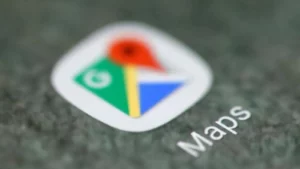
Source: Hindustan Times
On Sunday, February 27, Google announced that it had temporarily disabled some of its tools on Google Maps in Ukraine. Alphabet’s Google confirmed that these tools are those that provide information on live locations and traffic conditions, and how busy various places are at a point.
The tech company specified that they had taken this particular step of globally disabling the feature to safeguard a significant part of the community. Disabling this layer of Google Maps covers hiding information such as how busy areas such as stores, restaurants or public places are in Ukraine. This is aimed at safeguarding the privacy and security of local communities in Ukraine. Google remarked that they had taken this action after having consulted with sources that included concerned regional authorities.
Currently, Ukraine is bearing attacks from the forces Russia, after being invaded last week. Reportedly 400,000 civilians fled from the country as Russia dropped missiles into Ukrainian cities. These civilians, mainly women and children, are fleeing to neighbouring countries to seek protection.
The features disabled mainly included using the data of locations traced from various unnamed Android phones. This is done in order to view where users might face traffic delays. Google, and other big tech firms remarked that they are taking these steps to protect users in the area.
Recently, many online platforms are being tapped by researchers to put together the happenings of the invasion. An expert in open source intelligence specified how he saw unusual “traffic jam” along the Ukrainian Border on February 24. He realised that those were signs of the Russian invasion of Ukraine.
“I think we were the first people to see the invasion,” OSINT expert, Professor Jerry Lewis of the Middlebury Institute, informed the source. “And we saw it in a traffic app.”
Google added that though this information has been blocked from global access, live traffic feature is still accessible to drivers using features that include turn-by-turn navigation. Currently it is unclear if Google has ever taken the step to disable such features at the time of previous conflicts or wars.
The disabling of this feature by Google is owed to previous occurrences when mapping services led to insights into unexpected information. An instance in 2017 included fitness app Strava releasing a map containing the location of various US military bases by showing the airfield where the soldiers had been running laps. Another instance when information from war zones was shared through social media was when Snapchat’s geolocation feature provided frontline images from the Iraq War.











